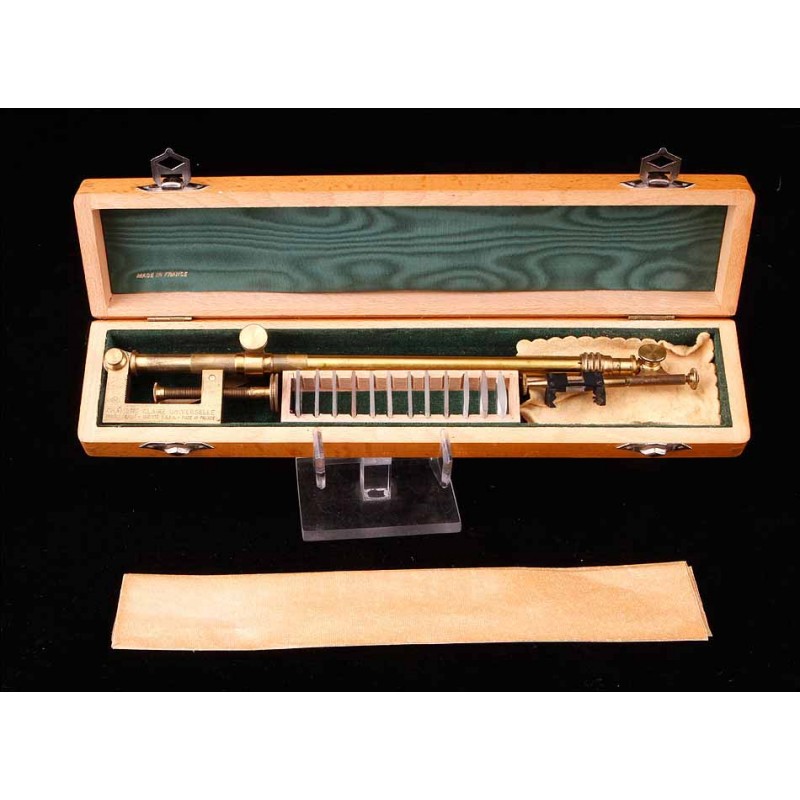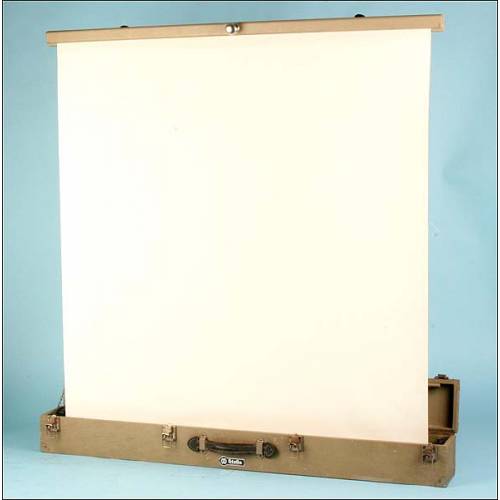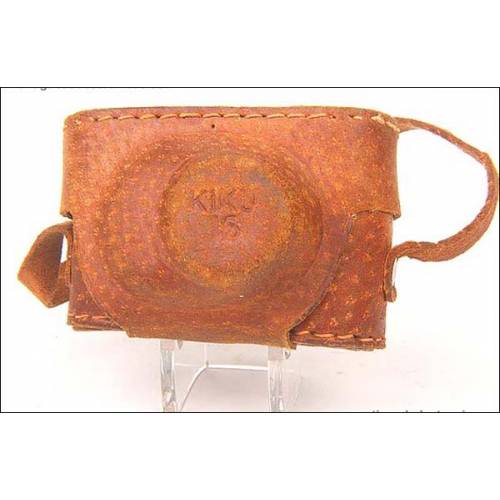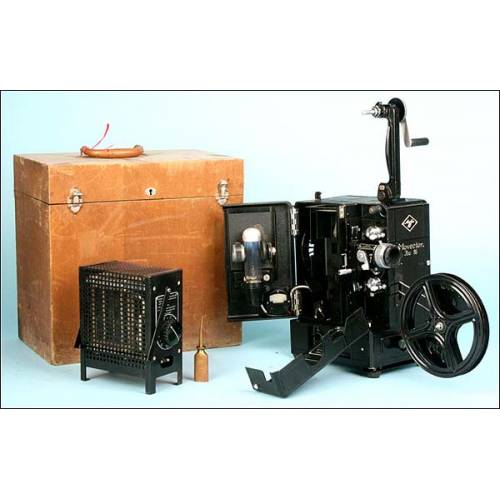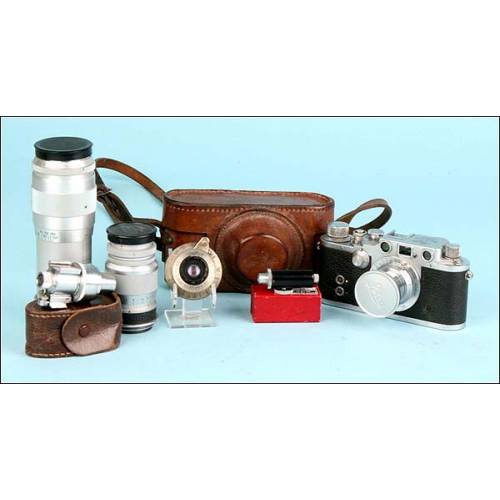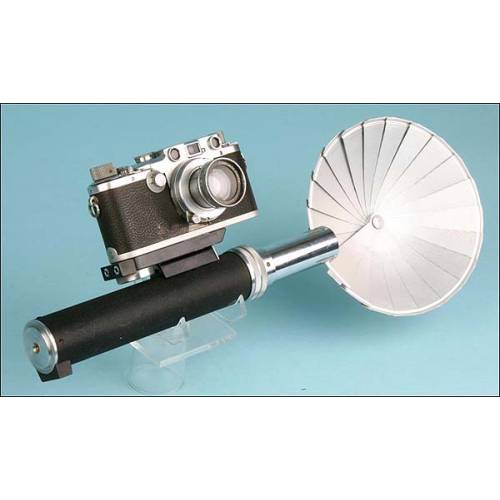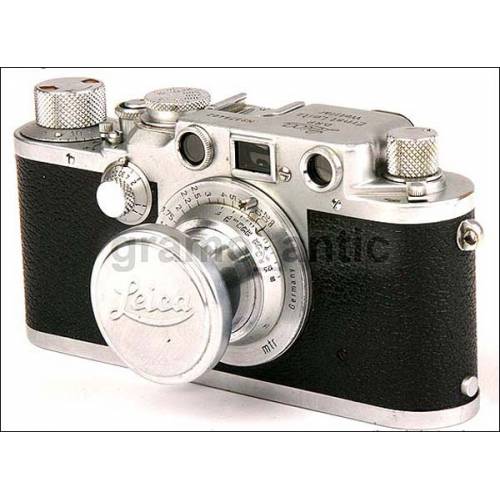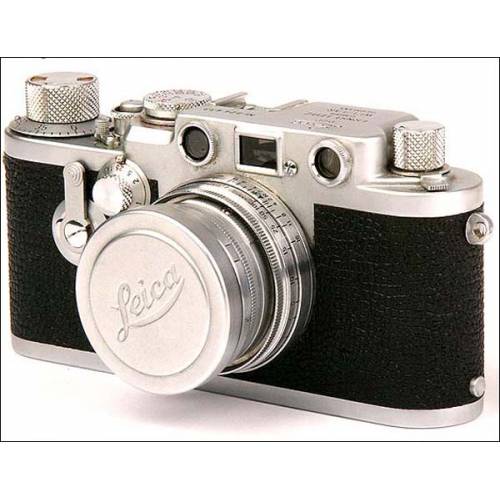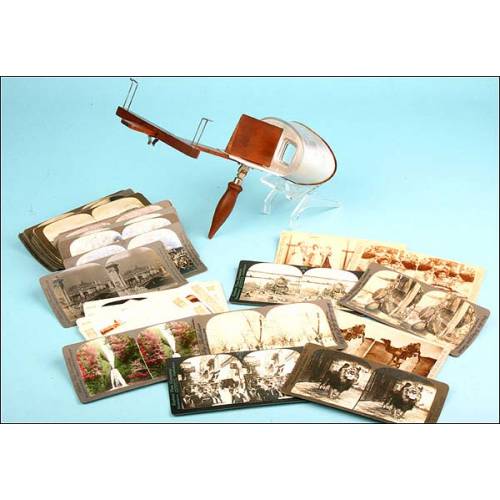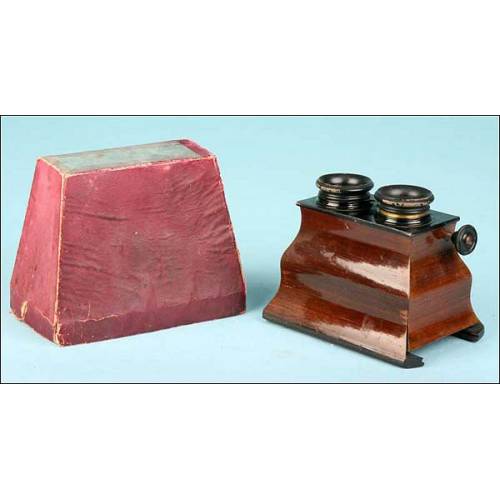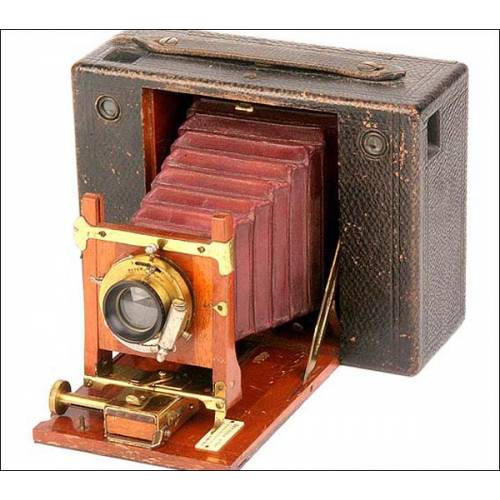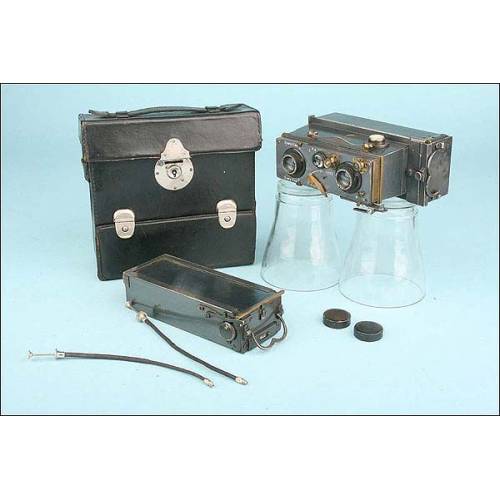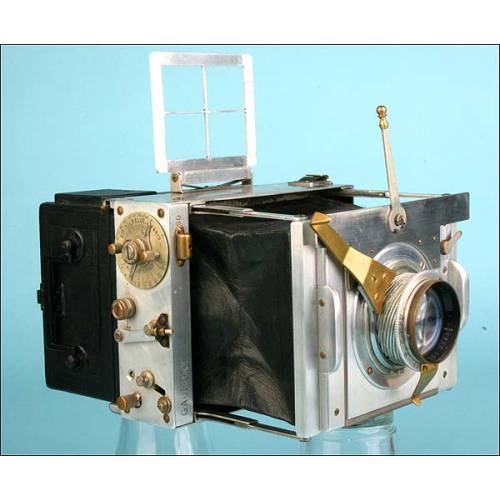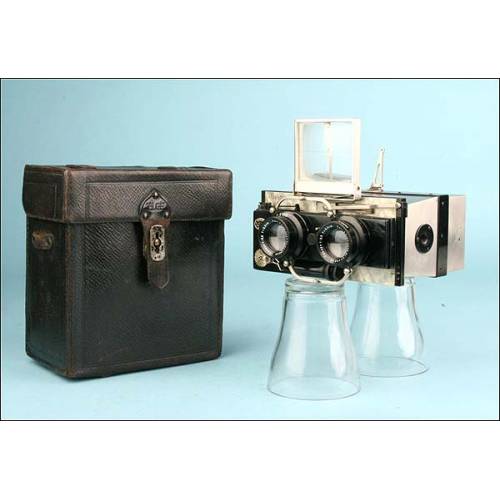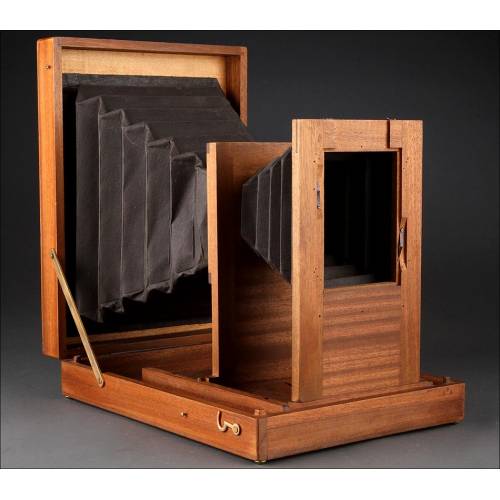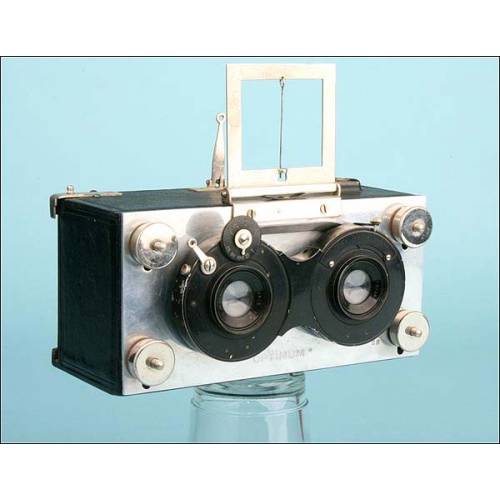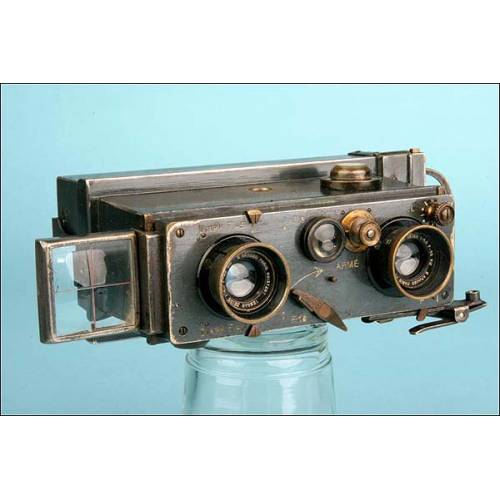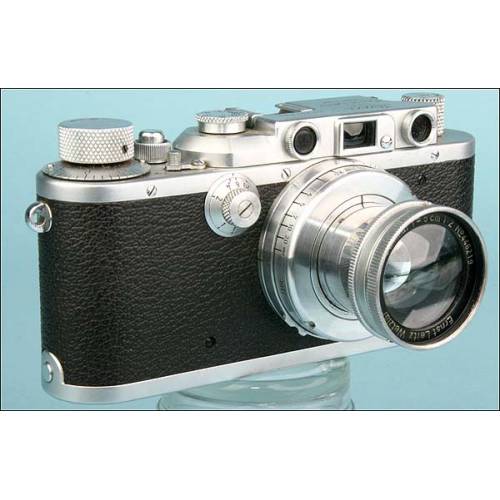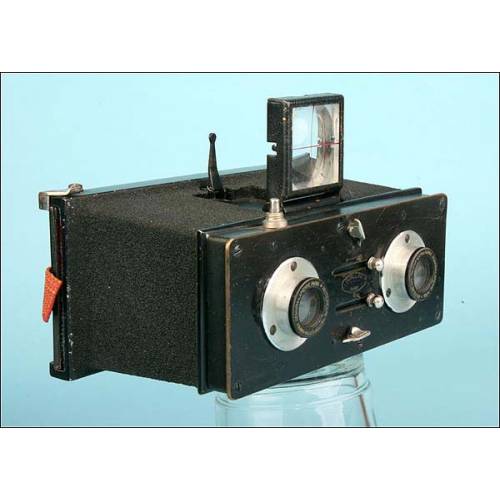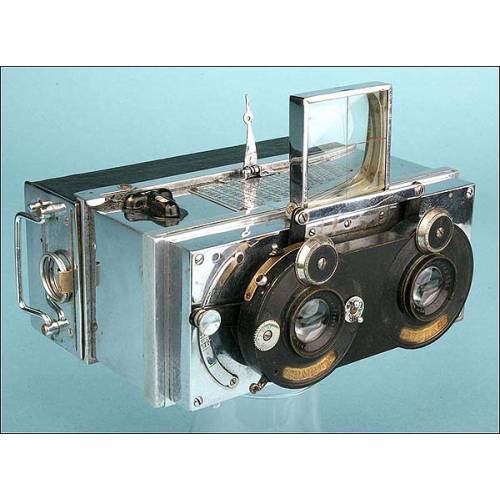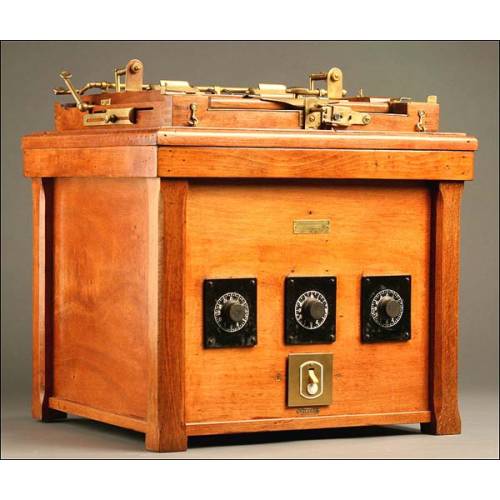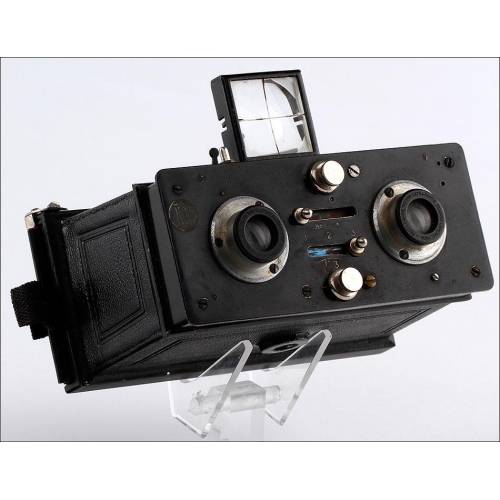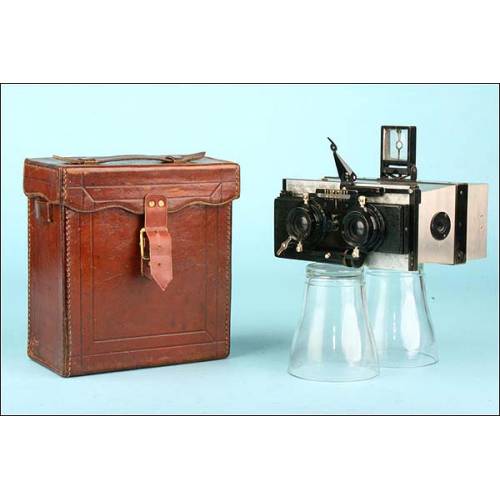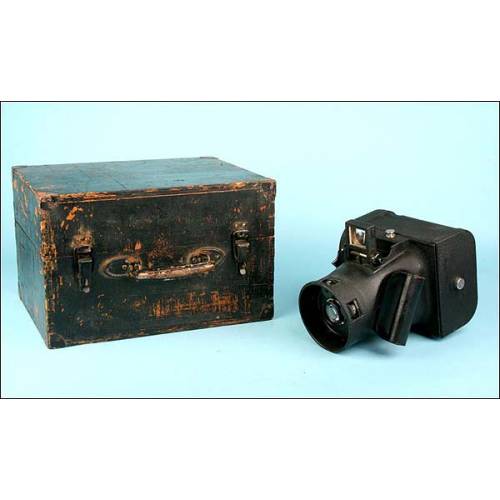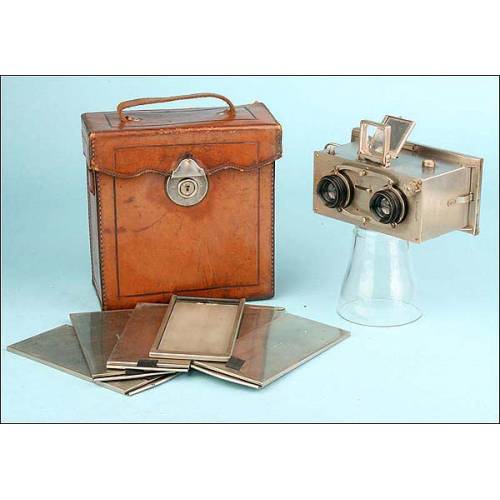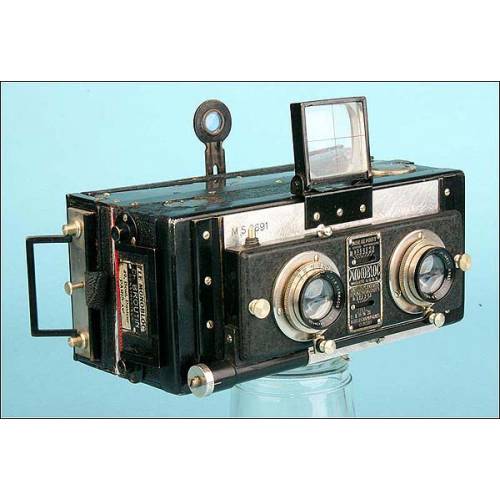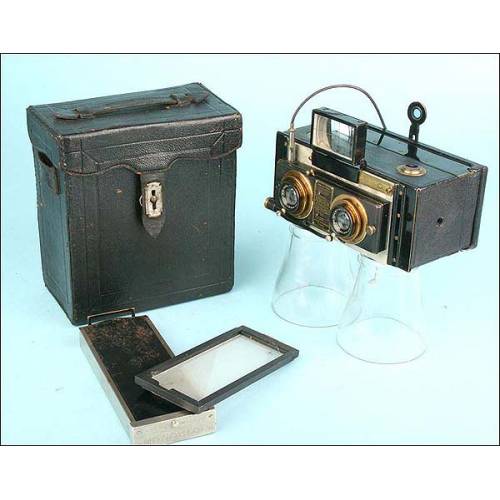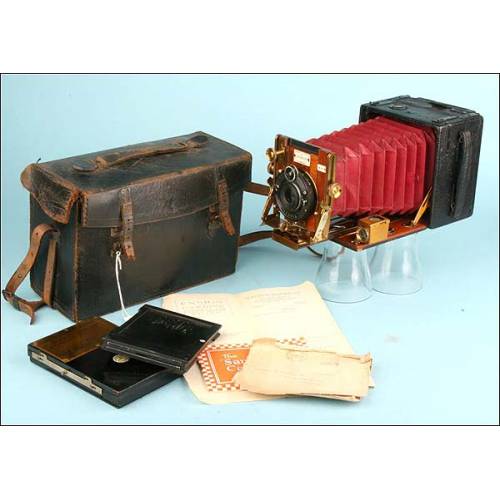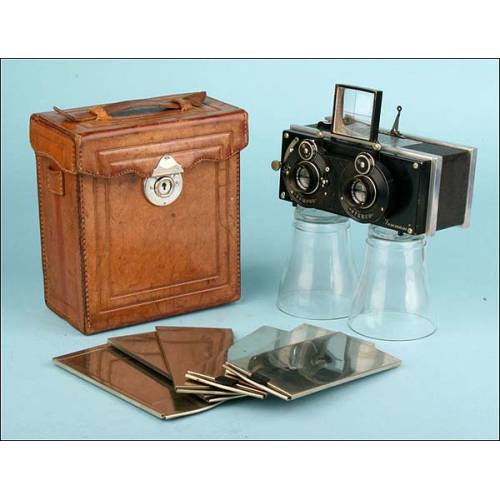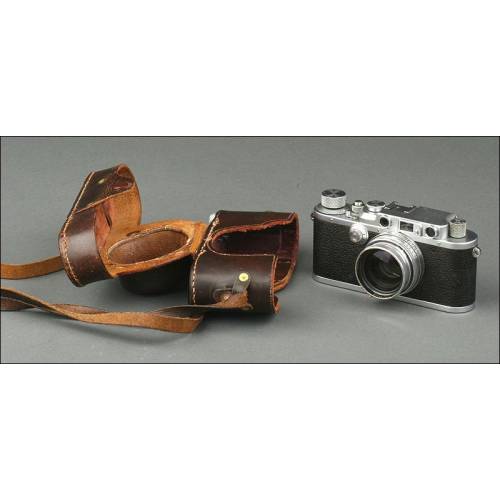B-916
Antique brass camera lucida. Complete. Paris, P. Berville
Attractive antique lucid camera in its original wooden case. With complete set of lenses.
Sold!
This curious article is an antique camera lucida made of golden brass and original from the early 20th century. The set is complete and remains in good condition inside its original wooden storing case. This camera lucida comes from France and is in perfect working order; it can still be used to draw persons, objects and landscapes from nature, keeping the exact proportion thanks to its ingenious lens system. In order to do so, the instrument comes with a complete lens set with different magnifications. The clamp located at the end of the bottom arm bears an engraved inscription that describes the object (CHAMBRE CLAIRE UNIVERSELLE) and indicates it was made in France. The golden brass this instrument is made of is quite well preserves and boasts a fine patina that provides the piece with a very special charm. The storing case is also in good condition: it is made of solid beech wood and preserves the outside finish and the silvery-metal locks. The inner lining is a lovely dark-green moiré fabric in really good condition, with the inscription MADE IN FRANCE printed in golden lettering. This gorgeous camera lucida is a precision drawing instrument with a remarkable charm, worthy of an art museum. Measurements: Width: 11.8 in / 30 cm. Depth: 2.5 in / 6.5 cm.Camera lucida history The camera lucida was invented in the 19th century. It is a device to reproduce objects from nature while keeping the exact proportions in the drawing. It was described by Johannes Kepler in his work Dioptrica (1611), but there is no evidence of any of his contemporaries constructing a working camera lucida. The first one was designed and made by William H. Wollaston in 1807; Wollaston also gave it its definite name (camera lucida, meaning light room as a contraposition of camera obscura, dark room). During the 19th and early-20th century, cameras lucidas were quite popular. In 1833, the photographic pioneer William Fox Talbot tried to reproduce objects from nature using a camera lucida, but he was quite disappointed and decided to seek a means to "cause these natural images to imprint themselves durably". Today these devices are still produced, though they are not widely used.

